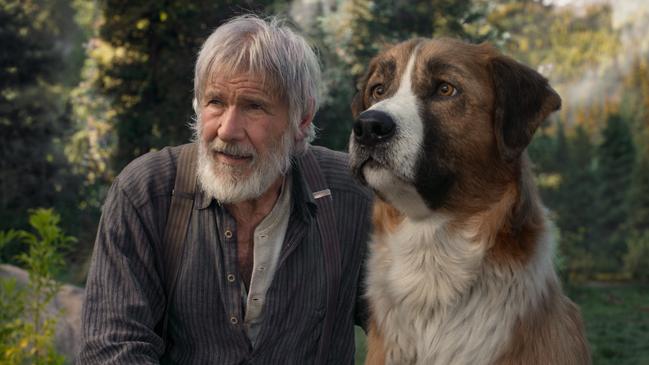
As he said to me, if the book didn’t exist this would be a two-star movie … but the book does exist! What the director, Chris Sanders, and the writer, Michael Green, have concocted from it is intriguing in a way.
They add to it, delete from it, greatly soften its violence, balance its gender lines and, I think, are dishonest to it right at the end. As the PG rating suggests, the target audience is pre-teens. Twentieth Century Studios, which made a serious version in 1935, starring Clark Gable, has bowed to the call of the child.
That 1935 movie also starred a dog, in the lead role of Buck, the powerful but pampered St Bernard-Scotch shepherd mix who is stolen from his plush home in California and sold as a sled dog in the frozen wastelands of Yukon at the height of the 1890s Klondike gold rush.
The canine star is the main deletion in this remake. While the film-makers did scan a real dog, one found in a pound, to study movement, the Buck we see on screen is CGI and motion capture. His facial expressions come courtesy of actor, stunt co-ordinator and movement coach Terry Notary (Avatar, the Planet of the Apes reboot, Kong: Skull Island).
As a result, Buck looks, acts and thinks like a human. He does a lot that no dog will do, such as counsel Harrison Ford (who replaces Gable, at twice his age, as outdoorsman Jack Thornton) about his drinking.
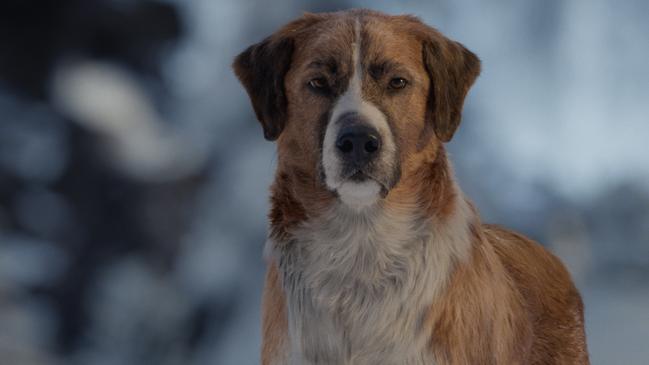
Honestly, if Buck had worn spectacles in this Freudian scene I would not have been surprised. Nor would I have been taken aback if CGI Buck disproved London’s first line: “Buck did not read the newspapers.”
And Ford may as well have been on the bottle. When WC Fields said it was unwise to act with children or animals, CGI had not been invented. Ford has to act with thin air, and at times it shows.
All the other dogs in the movie, and the bears, moose, rabbits, etc are CGI. Now, to be fair, the animals’ human-like antics did spring some laughs from the young kids in the session I attended. And to be doubly fair, London was not immune to anthropomorphism in the novel.
It’s the other changes I like less.
When Buck meets the Man in the Red Sweater in the book, his beating goes on for a page and is full of pain, “blood flowing from nose, mouth and ears” and slaver. He is being taught the law of the club. In the movie he is hit once.
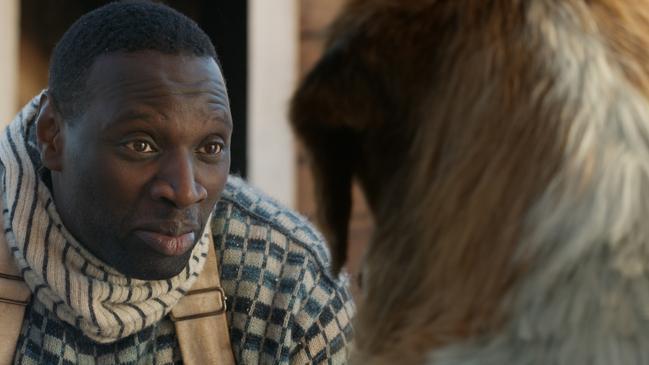
Similarly, the dogs fight like humans. There is no going for the throat, no tearing of flesh. They win fights by technical knockout. The blood, guts and “live hurricane of fury”, as Buck is described in the book, are missing.
Towards the end of the movie, we whispered in agreement that since the book was being fiddled with it would be a cool finale if Buck ended up eating Harrison Ford.
I’m not going to reveal what does happen to Buck and Thornton, who become soulmates, but this is the point where I think the film-makers are dishonest to the book. They show, and yield to, a fear of causing cultural offence.
The people at work here are talented. It’s Sanders’s first live-action feature following animated hits such as How to Train Your Dragon (2010) and The Croods (2013). Green wrote the best Marvel film yet, Logan (2017). And Polish cinematographer Janusz Kaminski won Oscars for Schindler’s List (1993) and Saving Private Ryan (1998). There is one extended scene, involving the 500-mile mail run and an avalanche, that is thrillingly filmed.
The upshot is that this is an interesting one-star movie to think about. My son and I talked about it all afternoon. Whether it’s a movie worth paying to see, however, is a different question. And whether fair or not, it puts the pressure on Australian filmmaker Leigh Whannell, who is about to release a movie based on HG Wells’s 1897 novel, The Invisible Man. I will review that here next week.
The Call of the Wild (PG)
National release
★
-
Another Emma we had to have
Live-blogging the Oscars a fortnight ago, my colleague Glynis Traill-Nash asked me, apropos of Sam Mendes’s 1917, whether we really needed another war film. It was a fair question, one I think can be extended beyond the trenches.
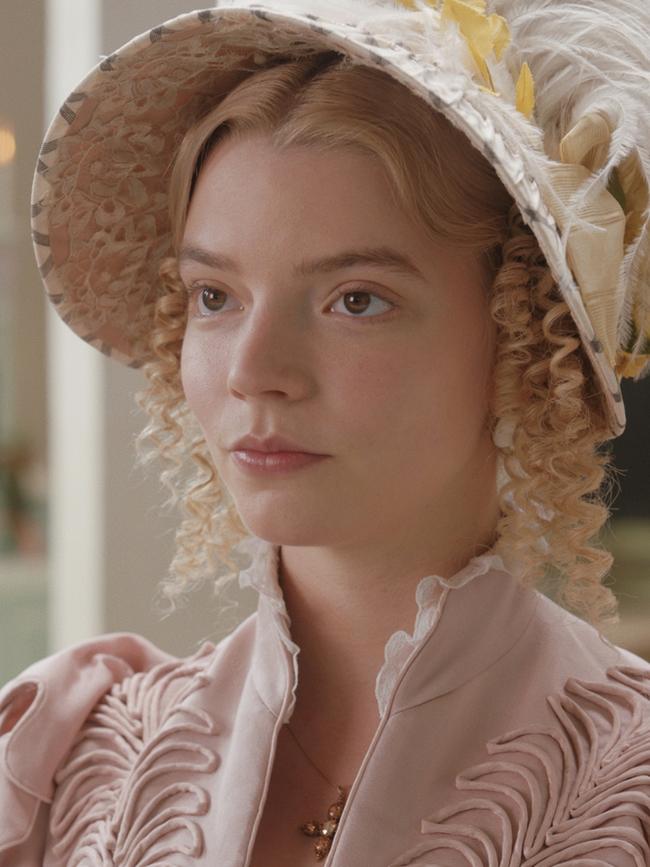
Do we, for example, really need another Emma, following the numerous film, TV, stage, radio and novelistic adaptations (Emma and the Vampires in 2010, to name one) in the 200 years since Jane Austen published the novel?
Hollywood thinks so, and so it is that Argentine-English actress Anya Taylor-Joy assumes the role we have seen Alicia Silverstone and Gwyneth Paltrow have a go at in the past. She is striking to look at and brings a physical intensity to the role that is deftly balanced by a well-disguised emotional vulnerability.
The passage of time is such that Rupert Graves, who we will never forget as Lucy Honeychurch’s brother in James Ivory’s A Room With A View (1985), is now the bewhiskered Mr Weston, the man who takes away Emma’s governess by marrying her.
That is how the film, the directorial debut of American photographer Autumn de Wilde, starts, with Emma lamenting the loss of her governess, even though she set up the marriage. The script is by New Zealand writer Eleanor Catton, who won the 2013 Booker Prize for The Luminaries.
She is faithful to the novel. Before we see any character, Austen’s opening line appears on screen: “Emma Woodhouse, handsome, clever, and rich, with a comfortable home and happy disposition, seemed to unite some of the best blessings of existence; and had lived nearly twenty-one years in the world with very little to distress or vex her.’’
Emma is a matchmaker. She thinks setting people up is “the greatest amusement in the world”. She says she has no desire to marry herself. In her matchmaking sights is her lower-in-status friend, Harriet Smith (Mia Goth).
In the vicinity are the handsome George Knightley (Johnny Flynn), who we suspect loves Emma (and perhaps it’s requited), the boorish but good-looking minister Mr Elton (Josh O’Connor) and the mysterious, super-rich Frank Churchill (Callum Turner).
Bill Nighy, who I like a lot, is Emma’s father, and he overacts his head off. Indeed, his overacting summed up this movie for me.
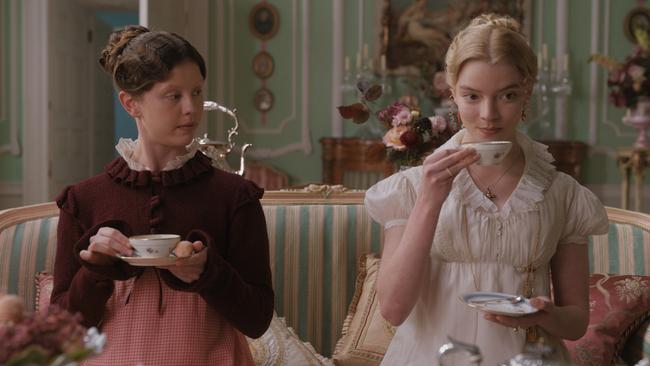
It is beautifully filmed, especially in the juxtaposition of actors and art — the director’s photographic skills come to the fore — but the plot is dull and overall it feels as though we are being asked to laugh at the simple fact that people lived, spoke and behaved differently in the 19th century.
There is one outstanding scene that goes beautifully and brutally to the class, wealth and gender divisions Austen was writing about. It’s when the group is having a picnic lunch and Emma flippantly insults the compulsive talker, spinster Miss Bates (Miranda Hart). What Emma says would today be laughed off, but back then it wounded deeply. When Mr Knightley confronts Emma soon afterwards, that, too, is brilliant.
Prepare to fall in love with #EMMA. In select theaters February 21st, everywhere March 6th. pic.twitter.com/bUGXemMj5d
— EMMA. (@emmamovie) February 14, 2020
One of the fascinating aspects of Emma, the novel, is that the protagonist is one of Austen’s least liked characters, as the author planned. “I am going to take a heroine,’’ she wrote, “whom no one but myself will much like.”
Well, I am on Austen’s side. Mr Knightley has some brave moments, but Emma is the only character I like in general. Perhaps that partly explains why this film doesn’t work for me. Others have praised it, so you should read around before deciding whether to go see it.
Emma (PG)
National release
★★




The Call of the Wild, a live-action drama based on the classic 1903 novel by Jack London, is an outstanding example of the unspoken truth that CGI can suck. This is a hilariously embarrassing movie. My 14-year-old co-viewer and I laughed out loud for the final 30 minutes.